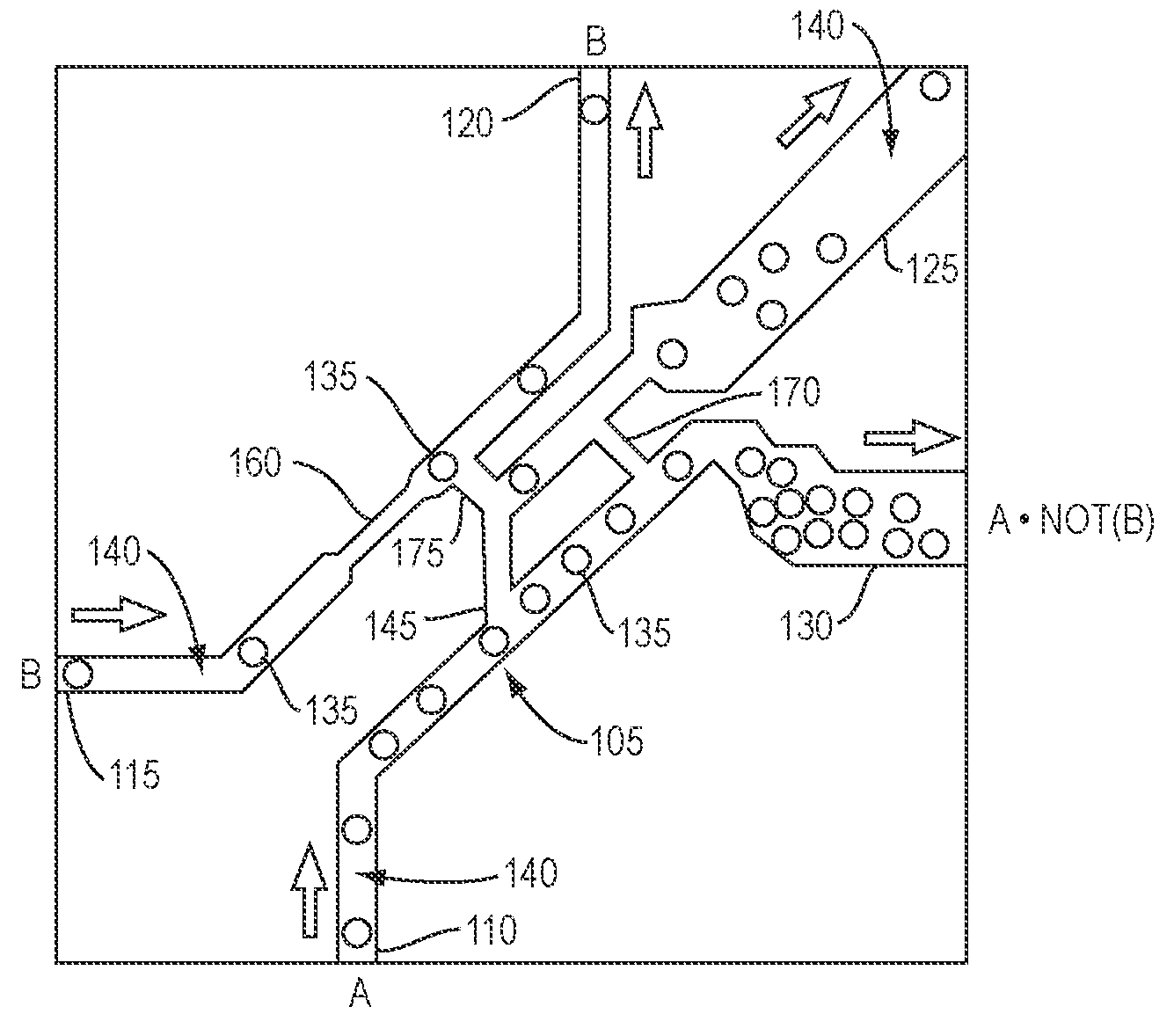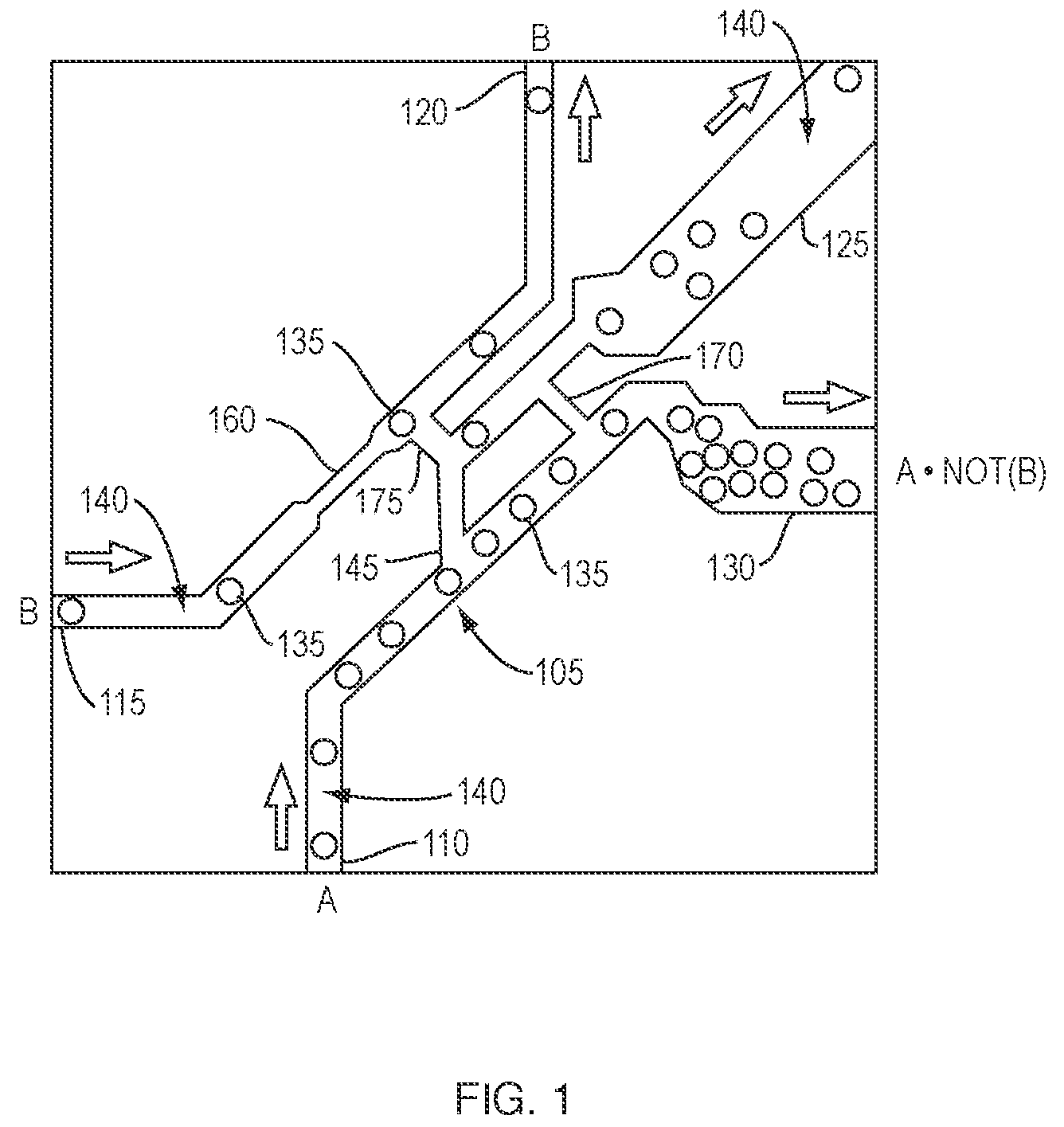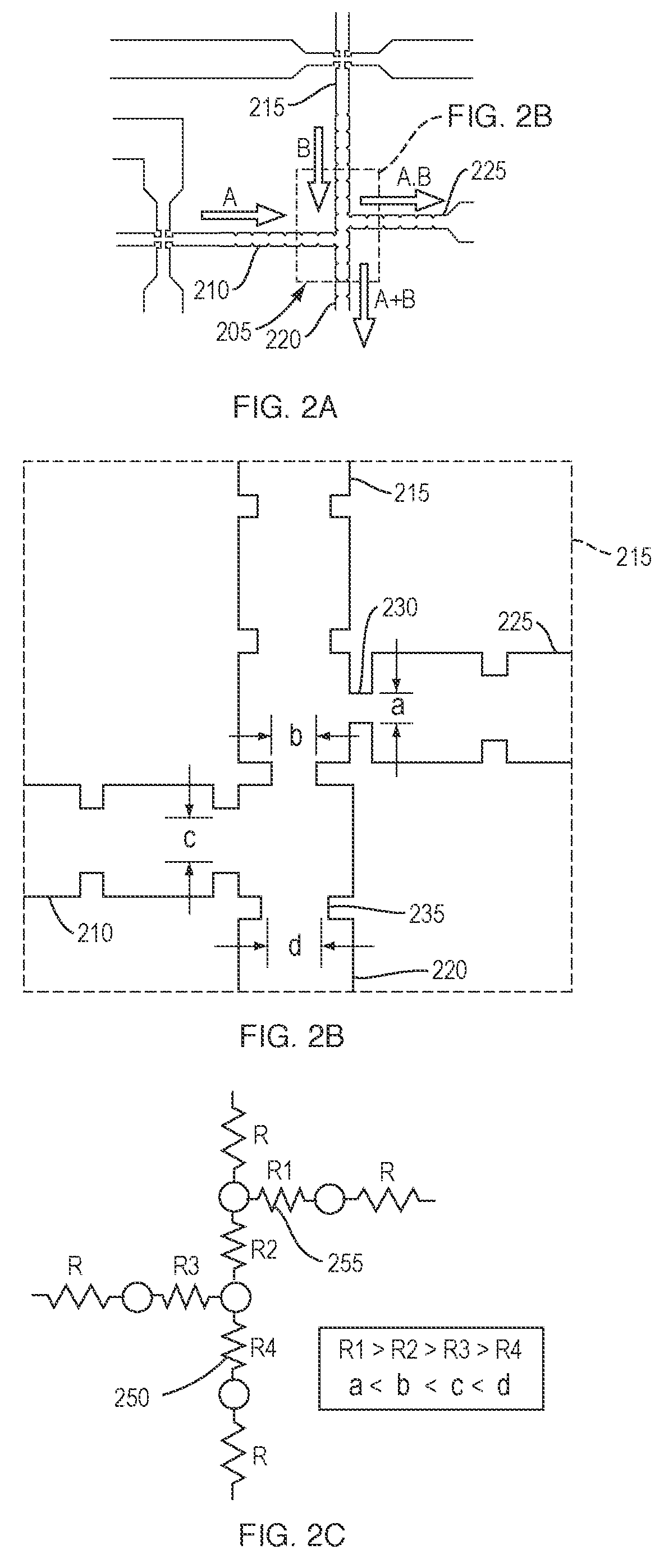Because viscous and
surface tension forces dominate fluid dynamics at small scales, these devices could not be miniaturized further, resulting in limitations in large-scale integration.
With
miniaturization, which was necessary for higher operating speeds and integration, it was impossible to maintain high Reynolds number flow in microscopic geometries.
Fluidic approaches to control and logic applications were therefore eventually abandoned due to the inherent
disadvantage that they could not be scaled down below
millimeter scale because of their dependence on inertial effects.
This did not provide the state restoration benefits obtained with digital logic.
As expected, the performance of these
inertial effect devices falls down sharply with smaller length scales.
High pressure and fluid flow velocity can be employed to improve upon performance, but this approach is not feasible if good performance for fluidic devices is required at reasonable pressure differentials.
Currently used external electronic control schemes use large arrays of electrodes, such as in
electrowetting-based microfluidic droplet systems, thus limiting scaling properties of the devices.
Moreover, electric fields can cause unwanted interference effects on biomolecules.
The problem is further complicated by difficulties arising due to packaging and merging of
silicon based technology with PDMS based
soft lithography techniques.
As the complexity of the
chip increases, the number of control lines increases drastically, making it intractable as a scalable control strategy.
Moreover, control elements made using multi-layer
soft lithography cannot be cascaded, resulting in limitation of scaling.
Use of non-newtonian fluids severely limits the applicability of these devices in various situations.
Change in flow resistance has been used [T. Vestad, D. W. Marr, T. Munakata, Appl. Phys. Lett. 84, 5074 (2004)] to build Boolean logic in a single-phase
Newtonian fluid, but since its input and output representation are not the same these devices could not be cascaded.
However, the device requires integration of heating elements in fluidic channels with mechanical structures, and the control is limited by the rate of generation of thermally induced vapor bubbles.
Using a
heating element for bubble generation also results in unwanted thermal effects on the biomolecules and reactions being carried in the microfluidic device.
Cascadability and feedback (where a
signal acts on itself), which are common in electronic control circuits, are currently lacking in microfluidic control architectures.
Di-electrophoretic [P. R. C. Gascoyne et al., Lab
Chip 4, 299 (2004)] and electrostatic [D. Link et al., Angew Chem. Int. Ed. 45, 2556 (2006)] force based external control schemes have been proposed on-
chip droplet management, but they all require independent control of a large number of external electrodes and provide only single gate level control, which limits
scalability.
Thus very little manipulation / chemical
processing / pre-arrangement is possible before the drop is transferred on the substrate.
This is due to the limitation that only a very fixed number of ink reservoirs (typically four) can be stored and accessed by the
cartridge.
To sample a large number of locations over a long period of time is cost prohibitive.
The method for tagging a sample with date / time / location and other parameters is also cumbersome in conventional methods.
Self-
assembly techniques suffer from errors that are incorporated in the device.
Also, it is not possible to program the structure of the object to be made.
This limits the type of objects that can be fabricated by self-
assembly.
The current
bottleneck in directed
assembly exists in limitations that exist in precise manipulation of a large number of very small parts forming the object / device.
Thus the
throughput from a directed assembly technique is low.
Current techniques use bulky
fluid handling and delivery techniques which also limit post-
processing capabilities where the identified sampled could be further processed.
In a similar situation, Single molecule studies are usually performed in solution using bulky and expensive optical probes or
patch clamp techniques.
Current techniques require tedious manipulation mechanisms and hence can not be automated or used for high-
throughput analysis of a large number of individual molecules, such as mixture of things that exist inside a
cell.
Previous fluid logic demonstrations at low reynolds number therefore have various shortcomings, including use of non-newtonian fluids, with consequent non-linear flow properties, use of an external switching element like a solenoid, limiting achievable device speed, difference in representation of input and output
signal thus inability to
cascade logic gates to form a complex boolean gate, and an inability to scale to large and complex microfluidic droplet / bubble circuits.
In addition, there is a limitation in providing input to microfluidic chips, because the input must be provided serially using valves based on solenoids located outside the chip.
In addition, the number of control lines needed to run a
microfluidic chip currently increases drastically with the complexity of the designed chip.
This is because the switching elements cannot be cascaded to form complex control networks.
 Login to View More
Login to View More  Login to View More
Login to View More 


